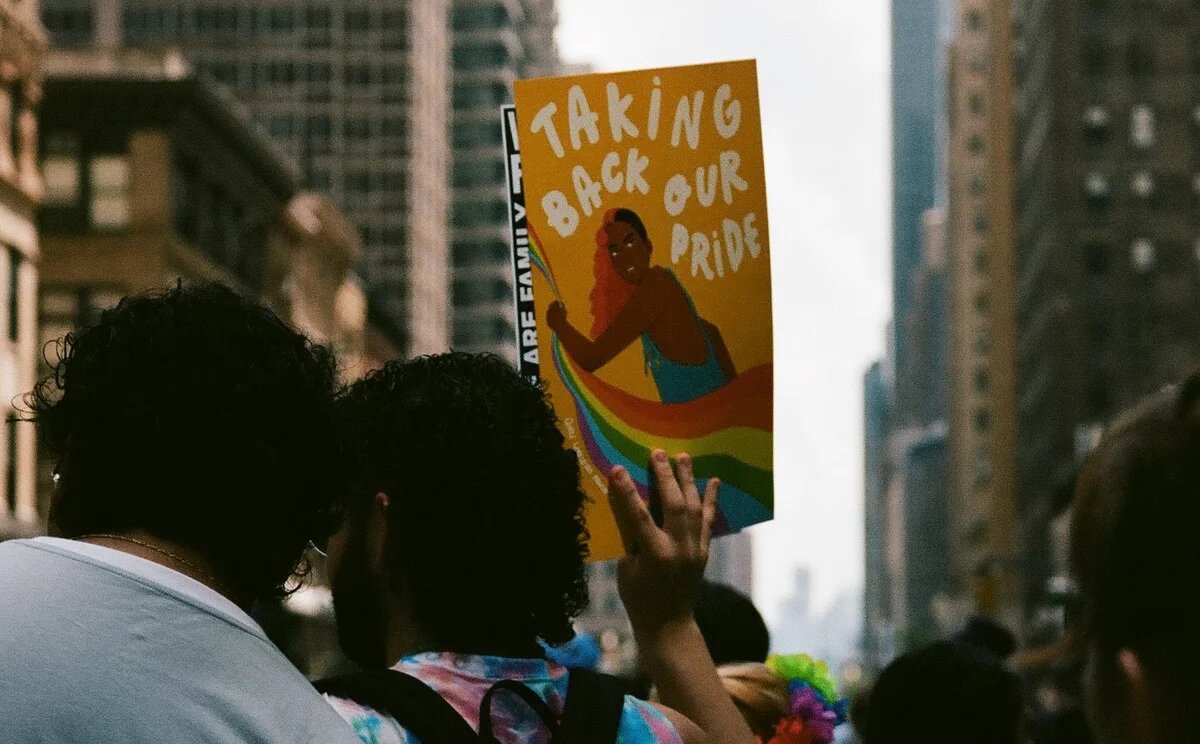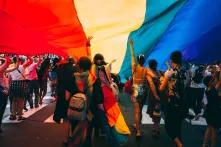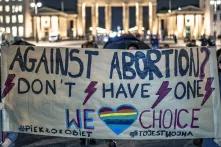I was having flashbacks. Standing in Hasenheide park, lit by the blue lights of police vans, I could hear the barking of police-trained dogs mixed with the sound of helicopters hovering above. I could see bodies dancing, others running away. A surreal scene, yet somehow fitting to 2020’s pandemic dystopian scenarios. Ravers were being dispersed by the police. Yet, in all its strangeness, something felt eerily familiar. I had seen this before. Memories rushed back: of police raiding queer spaces in Egypt in 2014, supposedly justified by allegations of perversion and disease-related fears. What does a police raid on a bathhouse in Cairo have in common with another raid on a queer rave in Berlin? The short answer could be homophobia, but a more careful analysis is needed. A closer examination of two cases of homophobic violence, in Cairo and Berlin, will enable me to investigate the architectures of homophobia at play.

Raids on raves in Berlin
On June 20, 2020, a media report on illegal raves at Berlin’s Hasenheide Park was aired on Rundfunk Berlin-Brandenburg (RBB), a state-funded German media channel. Such gatherings were dubbed “Corona parties” by the German media. Having received an insider tip, the reporter, equipped with a discreet camera, infiltrated a rave hidden among the bushes. The resulting report showed images of people dancing and socializing, while a voiceover commented that drugs were being consumed and that most attendees were not wearing masks. The report stirred waves of condemnation and calls for increased policing of the park, as well as proposals to build fences around it, or make mask-wearing compulsory within. The outrage focused on the recklessness of such raves, holding the ravers responsible for worsening the outcome of the pandemic. To a lesser extent, critics also bemoaned the destruction of green spaces and the dumping of trash in the park, and observed that the task of maintaining the park was too overwhelming for the local district responsible to cope.
The broadcast of the Rundfunk Berlin-Brandenburg (RBB) media report was followed by a massive increase in police intervention at the park. The Berlin police used excessive force, vehicles, helicopters, trained dogs, and large spotlights to clear subsequent raves, as the report inadvertently attracted more audience for the raves The location of the raids in Hasenheide had a symbolic significance. Hasenheide has historically served as a space for queer sociality and sexual encounters. Like other parks in Berlin, it has an FKK (Freikörperkultur – nudist) area for naked sunbathers. This spot and other parts of the park have long been known as gay cruising areas, frequented by those seeking casual sexual encounters. When nightclubs were forced to close as part of measures to curb the spread of infection, nightlife moved outside; parks like the one where the RBB report was filmed became dancefloors.
In the following months, raids on other cruising spaces, as well as queer indoor gatherings were reported. During the evacuation of the queer club night ‘Pornceptual’, police reportedly used excessive violence and called attendees “disgusting and perverse.” Following a rave in Humboldthain, a park in northern Berlin, seven men were violently arrested and forced to undergo blood testing. It is important to remember that, at that time of airing the RBB media report, modes of transmission of COVID-19 were still being investigated and, due to the airborne nature of the virus, many of the ravers felt safer in open-air settings. Despite the panic raised by the RBB report, COVID-19 infections in Berlin remained low between June and August 2020, and only began rising again in mid-September. Thus, the narrative of Hasenheide raves being associated with a surge in infections remains questionable.
Are the raids on Berlin’s parks and the excessive police force exerted indicative of homophobia? If so, how can this case study help us to better understand the structures of homophobia? In seeking answers to these questions, I find it illuminating to recount the case of a police raid on a bathhouse in Cairo.
A raid on a bathhouse in Cairo
In December 2014, a media report was broadcast on an Egyptian satellite TV channel, purportedly investigating events that had taken place inside a bathhouse in Cairo. Titled El Mestakhabi (The Hidden), the show’s ostensible goal was to combat crime and create social change. Using a hidden camera, a member of the reporting team pretended to be a bathhouse client in order to collect video footage. The reporter persuaded one of the staff members to provide him with contact numbers for male sex workers; the recorded exchange was then shown to portray the space as a brothel.
Before showing the bathhouse footage, the reported opened with a sequence on HIV/AIDS. The story deployed stigmatizing language, describing HIV as a death sentence, and concluded that the bathhouse was the most dangerous place in Egypt for its role in spreading HIV into wider society. The report made scandalizing claims that condoms were not used inside the bathhouse, and referred to attendants’ carelessness and malice.
Mona Iraqi, the producer of El Mestakhabi, contacted the authorities, which led to a police raid. The following episode displayed extensive footage of the police arrests, as the clients of the bathhouse were escorted almost naked out of the bathhouse. 26 men were arrested and charged with “debauchery”, the legal term used in Egypt to prosecute sexual conduct between men, which is mainly deployed to target queer and trans bodies. Following the arrests, the defendants were subjected to torture, physical abuse, and forced anal examinations, as well testing for HIV and other STIs and for drug use by the authorities.
El Mestakhabi’s report was met with outrage from different segments of society. It incited homophobia where it didn’t exist, as the bathhouse had authorization for the government and was tolerated in the neighborhood for decades. Furthermore t was denounced by various human rights groups both locally and internationally. The incident stirred debate regarding media ethics and the role of investigative journalism, where Iraqi was condemned for acting as a police informant, instead of following media ethical standards. In response, Iraqi stated that her conduct was ethical; she “couldn’t remain neutral,” because the issue concerned “a public health disaster”.
Persistence of homophobia across borders
My experience as a queer exiled body during the pandemic in Berlin triggered, in certain ways, the same sense of persecution I had experienced in Cairo. This disturbing resonance became my point of departure for this transnational inquiry into the architecture of homophobia, in which I juxtapose here the events in Egypt and Germany – despite the obvious differences in socioeconomic, legal, and political context – in order to explore where they overlap and where they diverge.
Both cases involved highly publicized and well-circulated news media reports which deployed undercover reporting and led – directly in Cairo and indirectly in Berlin – to subsequent police raids. This kind of link between media and police work has been observed in other parts of the world, such as in Lebanon, where a TV report triggered a raid on a cinema used for cruising in Beirut, and the United States, where a reporter used undercover cameras during a park raid and then threatened to expose the images of the men arrested. In all these cases, the language and techniques employed by the news media engineered a moral panic: “a condition, episode, person or group of persons emerges to become defined as a threat to societal values and interests (Cohen, 1972).” While the issues identified may be real, the claims “exaggerate the seriousness, extent, typicality and/or inevitability of harm.” (ibid.)
In both of my case studies, the fear of disease, whether HIV or COVID-19, served as a pretext for the raids and was instrumentalized to stoke moral panic; serving as a pillar of homophobia’s architecture. In the wake of the HIV epidemic in the 1980s, several gay saunas were permanently closed in New York, San Francisco, and other European cities. This reminds us of the dark history of health and biomedical discourses, and how they have often been used to justify discriminatory policies. While COVID-19 is biologically different from HIV, there are striking similarities in the ways that both diseases have had the most severe impact upon the most vulnerable members of society – globally. Diseases are ‘managed’ by regimes of power that intersect with sexuality, class, race, gender, and other systems of oppression. Epidemics can reveal in striking ways how social hierarchies are regenerated and intensified. Travel and visa restrictions for people living with HIV, the blanket rejection of blood donations from men who have sex with men, and the criminalization of HIV transmission are examples of punitive policies, still in place today, that are rooted in bias rather than science, and disproportionately affect minorities.
Investigating the case studies aims to scrape the logics of homophobia. Author and literary critic Samuel Delany’s (1999) work on sexual cultures is apt here as it shows how homophobia is attributed to imaginaries about sex – or, rather, sexual excess. Delany recounts a conversation with his conservative Catholic uncle, who believed that “prostitutes and perverts destroy, undermine and rot the foundations of society (1999).” Delany reflects that such a view underpins the assumption that the untrammeled pursuit of pleasure is the opposite of social responsibility. In other words, those who allegedly pursue pleasure bring about society’s collapse. This discursive relationship between pleasure and responsibility is key to understanding homophobia. The same conservative logic is applied consistently, spanning the different social and political contexts of Egypt and Germany. Conversely, valuing queer pleasure and reclaiming promiscuity, as proposed by the critic and art historian Douglas Crimp, would enable the generation of safer sex strategies and harm-reduction interventions that take into account the lived realities of marginalized communities.
Homophobia or homonationalism?
An important point of divergence in the two cases is the discursive use of homophobia as an analytical tool. While the events in Egypt were described as an overtly homophobic incident, this was not the case in Germany. The discourse that emerged around Hasenheide and other illegal raves centered mostly on rave and party culture, without focusing on the sexual identity of the ravers.
In the wake of reports about police arriving at different cruising areas and violently breaking up parties, Siegessäule magazine’s 2020 December issue featured interviews with police officers who function as intermediaries for Berlin’s LGBTQ community. They were asked whether homophobia is a problematic issue within the city’s police force. The officers responded that the police involved in breaking up the raves had been simply carrying out their duties to ensure adherence to pandemic-related measures. Anyone who felt that the police did not behave appropriately while doing so should report such transgressions to the police. Ironically, they were suggesting that the targets of homophobic police violence should turn to the same authorities that had enacted it for support. What is at stake in the case of Berlin is the denial of homophobia.
In my view, the denial of homophobia underpins an investment in Germany’s homonationalist attitudes and its self-acclaimed role as a promoter of LGBTQ rights globally. This investment relies upon the image of Germany as a queer-friendly nation being upheld. A transnational perspective blurs this unquestioned geopolitical distinction between the Global South and the ‘developed’ Western world – or “us” and “them”.
Sites of queer sociality have always blurred the line between the private and the public. In the incidents that I have discussed here, the peering eyes of intrusive media capitalize on sensationalism; making public queer intimacies that should be allowed to remain private. These actions not only contribute to homophobia among media audiences by fueling stereotypes and stigmatization, they also invite state-sanctioned violence, control, and punishment. Juxtaposing these case studies thus offers a prime example of how homophobia is constructed and engineered in similar ways across different political contexts.


